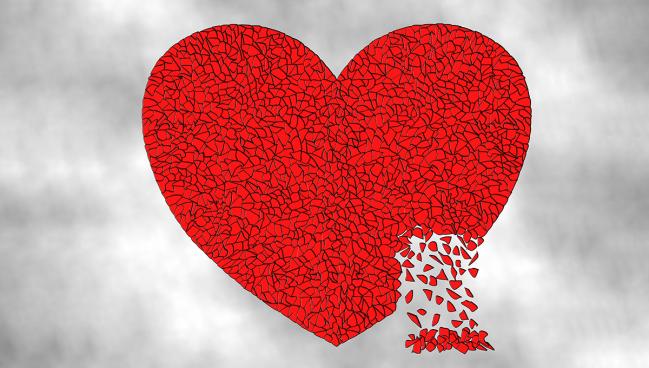Some Rays of Hope for ‘Sorry State’ of Transplant Rejection
Amy Silverstein’s plea to improve immunosuppression in heart transplant is not without merit, but experts also cite progress.

Over the weekend, CBS News reported that author and two-time heart transplant recipient Amy Silverstein had died—along with her healthy heart. This inevitability, announced by Silverstein herself in a guest essay in the New York Times 2 weeks prior, has struck a somber chord for cardiologists and, for some, put them on the defensive.
“It is the end of the road for my heart and me—not because we didn’t achieve and maintain sparkling cardiac health,” Silverstein wrote. “But because the sorry state of transplant medicine took us down.”
Just how dismal is the state of transplant medicine? Many patients struggling with severe heart failure (HF), as well as the doctors referring them for end-stage HF care, may now be asking themselves this question. Silverstein’s essay made the case that despite the technological and procedural hurdles overcome in the last half century, the success in solving the problem of acute rejection, and the strides made in increasing the donor pool, immunosuppression therapies themselves remain mired in the past.
“The last major immunosuppression breakthrough was tacrolimus, which is now over 20 years old,” Ryan Tedford, MD (Medical University of South Carolina, Charleston), acknowledged to TCTMD. “I think as a field we've gotten very good at managing acute rejection and so the risks with our current therapies are relatively low. And to be honest, it's the acute rejection and the 1- and 3-year mortality that the programs were really judged on. So, there hasn't been as much motivation to work on the longer-term outcomes.”
We are trading a fatal condition for one that can be managed, but that doesn't mean that there are no risks. Michelle Kittleson
For physicians working in this space, there’s “no mystery” to this and nothing that anyone has been trying to hide, said Michelle Kittleson, MD, PhD (Cedars-Sinai Medical Center, Los Angeles, CA). “We know from International Society for Heart and Lung Transplantation registry data that the second most common cause of death in heart transplant recipients is cancer. This has been recognized and understood by heart transplant physicians from time immemorial.”
That doesn’t change the fact that, for many, transplant remains the only lifesaving option, she continued.
“If you have a patient in front of you in clinic, whose survival is dwindling, you are going to reach for anything that increases that survival,” Kittleson said. “And there's no question that when you pit heart transplantation against the guideline-directed medical therapy for advanced heart failure patients, transplantation wins. What I like to tell my patients is . . . heart transplantation is a miracle and a gift of life, but it comes with its own set of problems, and we better make sure it's the right thing for you because there are no guarantees. We are trading a fatal condition for one that can be managed, but that doesn't mean that there are no risks.”
Moreover, the average life span for a patient who receives a cardiac transplant has inched upwards over the last two decades, due largely to the normalization and standardization of best practices across centers, J. Eduardo Rame, MD (Thomas Jefferson University, Philadelphia, PA), pointed out to TCTMD. Expected life span post-transplant in the 1990s was 10 years, he said, but now it’s 11 or 12 years.
“Sometimes progress comes slowly, and no one realizes it,” Rame said. “If in cancer, median survival improved by 2 years, you’d see it on the front page of the Washington Post or the New York Times.”
Slow Progress and Setbacks
But for many patients, quality of life matters as much as or more than quantity, and the day-to-day struggles Silverstein described in her essay warrant consideration.
“From my own practice, I see it every day: people complaining about their hands shaking or they can't think straight, they can't use a telephone, all due to sensitivity to Prograf or cyclosporine. These neurologic side effects are often intolerable and reduce the quality of life for our patients,” said Stanley Jordan, MD (Cedars-Sinai Medical Center), one of the early pioneers in the field of transplant immunobiology.
The advent of cyclosporine, tacrolimus, and mycophenolate mofetil-based protocols, in the late 1980s and early 1990s revolutionized the field of transplantation, Jordan said. “However, that's been 30 years ago now and that’s still the basis of our immunosuppression for heart and kidney transplantation. . . . This is why we must strive to develop more-refined and less-toxic therapeutic protocols that will restore the patients to a more-complete state of health without increasing the risk for drug-related side effects, infection, and malignancies.”
If in cancer, median survival improved by 2 years, you’d see it on the front page of the Washington Post or the New York Times. J. Eduardo Rame
The mammalian target of rapamycin (mTOR) inhibitors, like rapamycin and everolimus, came into use in 2008, but carried significant side effects including proteinuria, edema, and eosinophilic pneumonia, Jordan noted.
In 2011, belatacept, (CTLA4-Ig), which works by blocking the T-cell costimulation pathway that results in inhibition of T-cell activation, was cleared by the US Food and Drug Administration for “rejection prophylaxis” in kidney transplantation. “Here, clinical trials were promising when compared to patients treated with cyclosporine, but real-world use of the agent resulted in significant rejection episodes in most patients. Thus, the hope for a calcineurin-free protocol was largely abandoned,” said Jordan.
The other area that has failed to bear fruit is the research into agents or technologies that specifically treat or blunt chronic-active antibody-mediated rejection, such as plasmapheresis, immunoglobulins, and rituximab. A groundswell of interest in this pathway led to multiple abstracts at the American Transplant Congress back in 2019, but left hopes dashed. “We basically found there was nothing,” Jordan recalled. “Nothing worked.”
In 2023, he continued, “this is where we are. The drug development scenarios in kidney transplantation, and by [extension] to other organ transplantation, have generally come to a halt.”
Lack of Funding, Players
Part of the issue in the hunt for new agents relates to a lack of funding for immunosuppression research, which Jordan called a “big problem.”
For many years, new drug development in transplantation was funded primarily by Astelles, which makes tacrolimus (Prograf); Genentech/Roche, with mycophenolate mofetil (CellCept); and Novartis, with cyclosporine and everolimus. Today, “they are all no longer involved in new drug development for transplantation,” Jordan said. “I think the problem there is we're sort of a victim of our own success. With those drugs in the ‘90s, we went from having low graft survivals at 1 year to something like 95%, 98%. And people said, ‘well, you're done. You don't need anything else.’ But what has happened, and it's true for all organs, is that the long-term survival has not changed.”
People in the past blamed organ failure on calcineurin inhibitor (CNI) toxicity and/or persistent diabetes or hypertension that led to graft failure. Jordan believes the more likely culprit is poor compliance.
“These drugs, with their intolerabilities: people don't take them like they should. They just get tired of them, and that allows the immune system to be sort of clandestinely activated and they get smoldering antibody rejection.”
Hope on the Horizon?
An important shift occurred in 2010, with the recognition that more than half of all graft failures were due to the newly coined chronic-active antibody-mediated rejection (cAMR), which has “dramatically changed our focus,” said Jordan.
“For most of the history of transplant medicine, we have focused on development of agents focused on the T-cells,” he added. “Now, we are focusing on B-cells, antibodies, and plasma cell therapeutics.”
Imlifidase (IgG endopeptidase), which works by cleaving the heavy chains of human immunoglobulin G (IgG) antibodies to reduce donor-specific antibodies, was introduced in the mid-2010s and is now approved in Europe for reducing graft-directed antibodies to prevent rejection. Other agents actively being researched include monoclonal antibodies to modify T-cells, B-cells, and antibodies, as well as several plasma-cell-directed therapies targeting the antibody-producing cells that cause rejection.
He also pointed out that belatacept, which initially failed so dramatically in the kidney, is now being managed by weaning patients more gradually off tacrolimus. A trial in heart transplantation is expected soon, he said. “Today what we see in our own practice, in kidney [transplantation], is that transitioning patients after 6 months to 1 year, over 3 to 4 months, can be done safely without rejection. And people do benefit from that, but it does not alleviate all the risks for infections.”
It will likely gain more use in treating patients who experience significant side effects for the CNIs, he added.
And if immunosuppressive drugs have not evolved as fast as many might have hoped, there have been advances in tests to noninvasively monitor immune reactivity, helping to alleviate the burden of invasive biopsies. Jordan pointed to the T-cell function assay, approved in 2002, which measures ATP concentration in circulating CD4 cells and can be used to determine the state of a patient’s immunosuppression.
Rame cited newer blood tests like Allomap, cleared by the FDA in 2008 as a noninvasive gene panel that tests for immune quiesce, and Allosure and others, that use donor-derived cell-free DNA (dd-cfDNA) to detect signs of injury in the transplant. Both developments, now part of a combined test, have profoundly moved the needle for patients, allowing for noninvasive diagnosis of transplant rejection.
The MOSAIC trial, said Tedford, will take this dd-cfDNA technology one step further, using the test to tweak immunosuppression regimens to the unique patient circumstance, raising the tantalizing possibility of lowering pill burden and side effects.
In current practice, “patients will get on a certain dose and after 1 year, they taper down to what's considered a safe level to prevent rejection and then they just kind of stay on that for the rest of their life,” said Tedford. “But we need to have a better way to tailor that therapy, . . . particularly as we get out from that early phase: can we minimize some of the complications? That's a study that we're very excited to participate in.”
I think overall, we have to look at the positives. Stanley Jordan
Filling part of the hole left by prior pharma players, long-standing orphan drugmaker CS Behring is entering the transplant space looking specifically at the novel application of agents developed in the setting of autoimmune disease to target antibody-mediated rejection. There’s also a “renaissance” of smaller start-ups looking into novel agents targeting T-cell activation or antibodies in autoimmune diseases like myasthenia gravis, or in another instance, repurposing a drug first developed for multiple myeloma, said Jordan.
Beyond Traditional Donor Hearts
Beyond cardiac transplantation, there are other developments in the field of end-stage heart failure that constitute grounds for hope. Both Rame and Tedford made the case for left ventricular assist devices (LVADs) that are proving more and more viable as a longer-term option. For many patients, said Rame, an LVAD might buy them years before they move forward with full heart transplantation and, in rare cases, my allow for enough cardiac recovery that they can safely undergo LVAD explantation without going on the transplant list.
But we need to have a better way to tailor that therapy, . . . particularly as we get out from that early phase: can we minimize some of the complications? Ryan Tedford
Lastly, Tedford raised the specter of xenotransplantation following the successful transplant of a genetically modified pig heart last year. The approach is a long way from “prime time,” he acknowledged, but the hope with gene editing is to “potentially have the ability to someday do transplants without needing significant immune suppression, if we can make those hearts less immunogenic.”
Everyone who spoke with TCTMD was aware of and moved by Silverstein’s essay and expressed the hope that it could reignite the field of transplant rejection research by creating more funding opportunities or inspiring the needed basic science. It should also remind physicians, particularly those without expertise in heart failure and transplantation, to remain vigilant on behalf of their patients and advocate for newer and better remedies to manage their new hearts.
“I think if we're going to do what we promised our patients, which is to look after them until they die, which is what we do in a transplant program, then I think it's important to ask the question, how can we make you survive longer and, as importantly, live well?” Rame said.
Kittleson agreed, adding, “I think we have to be realistic. I don't mean to sound cold, but everyone is going to die, and our job . . . is to help people feel as good as possible, for as long as possible.”
“I think overall, we have to look at the positives,” Jordan said. “Heart transplantation is an amazing therapy in terms of taking somebody who's nearly dead and giving their life back, and I think that it will benefit greatly from some of the advances that are going on now. I'm very optimistic about the future.”
For Kittleson, the message that she hopes will be “amplified” as a result of Silverstein’s moving essay is not that physicians need to necessarily change what they’re doing, or that they are not doing enough.
Shelley Wood was the Editor-in-Chief of TCTMD and the Editorial Director at the Cardiovascular Research Foundation (CRF) from October 2015…
Read Full Bio




Comments